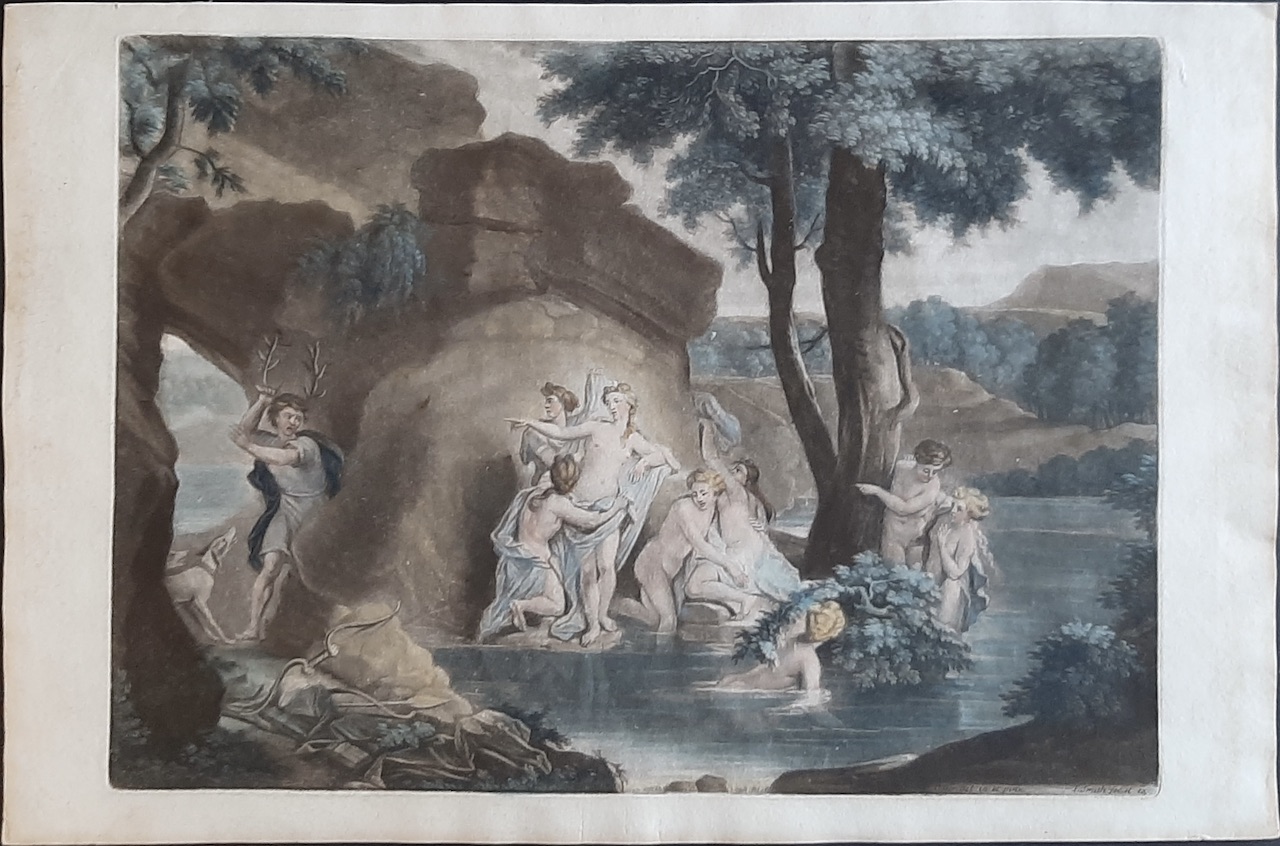Description
John Smith (1652-1742)
Diana and Actaeon
John Smith Diana Actaeon : Mezzotint (Mezzotint is a monochrome printmaking process of the intaglio family)
A rare heightened proof on contemporary wove paper from an oil painting by Pierre Berchet (1659-1719/20) made around 1705.
Dimensions of the sheet H. 275 mm x W. 420 mm, dimensions at the plate mark H. 252 mm x W. 347 mm.
For a reference, please to clic here.
John Smith Diane Actéon : John Smith was born in England in Daventry, Northamptonshire, around 1652. His vocation was entrusted to a London painter by the name of Tillet. He studied the black manner under the authority of the engraver Isaac Beckett (ca. 1653-88) and the Dutch artist Jan van der Vaardt (1653-1727).
He first worked for various publishers, including Richard Palmer. Palmer published a series of royal portraits by Smith in the early 1680s. Later, around 1684-86, Smith worked for the publishers Alexander Browne and Edward Cooper. However, from 1692 on, he assumed complete control of the production and publication of all his plates. He became the favorite engraver of the portraitist Sir Godfrey Kneller (1646-1723). He reproduced many of his paintings in engravings.
Between 1683 and 1729, Smith produced over three hundred engravings. Trained as an engraver, he was able to maintain control when, in the early 1690s, he moved from pure engraving to engraving and publishing. The refinement and “modernity” of his prints brought him fame and then material prosperity. Smith’s career, largely independent of the interference of outside publishers, may have inspired William Hogarth (1697-1764) and the next generation of printmakers. Some of his engravings are clearly important. One example is the Saint George and the Dragon published by Pierce Tempest after a painting by Balthazar van Lemens (1637-1704). In a different genre, Smith also published a number of quasi-erotic engravings and small images of putti, etc., similar to those by Bernard Lens II (1659-1725). Some of Smith’s larger portrait prints combine engraving with mezzo-tint and etching (e.g., the Count of Mar, CS 159); in such cases, the etched sections (usually the border) would have been left to a specialized engraver. These mixed prints resemble the portrait engravings of Robert White (1645-1703). Smith may have consciously imitated White’s impressive compositions. While the vast majority of Smith’s prints are in mezzotint, there are also two recorded etchings. One of these, an etching of two fencers, is currently known from a single print held in the New York Public Library. The other is an etching after a drawing by the Flemish artist Frans Snyders (1579-1657). He retired from professional life in Northamptonshire where he died on January 17, 1742 at the then canonical age of 90.


Reviews
There are no reviews yet.